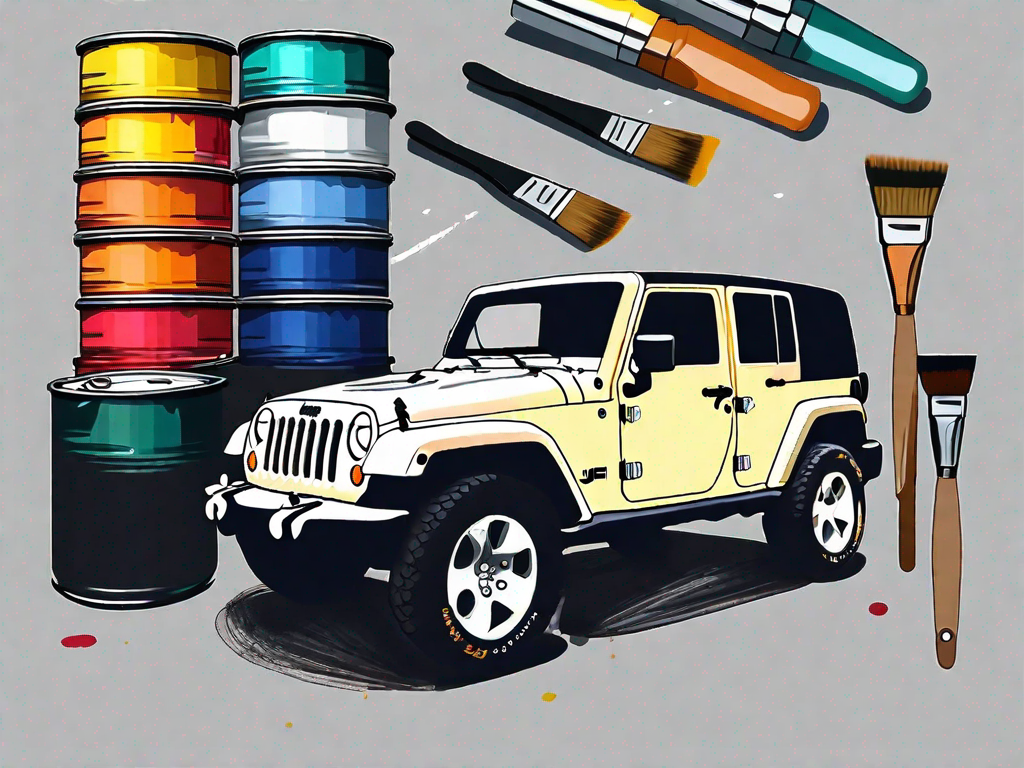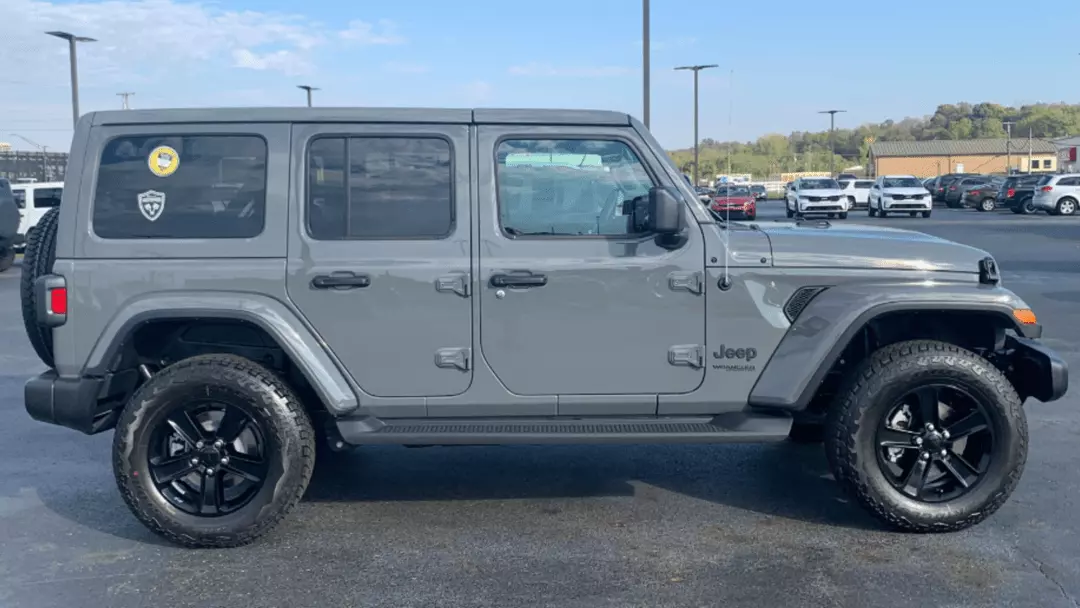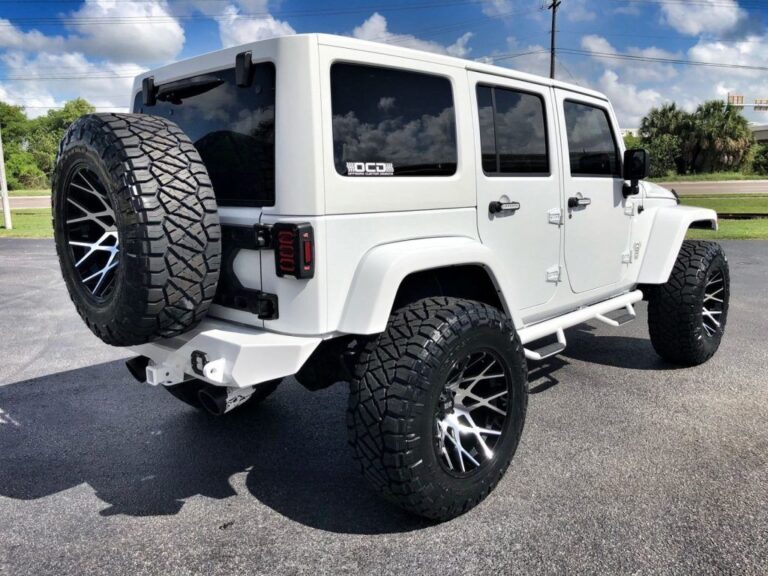How Much Does A Paint Job On A Jeep Wrangler Cost?
How Much Does A Paint Job On A Jeep Wrangler Cost? jeeps.truckstrend.com
The iconic Jeep Wrangler, with its rugged appeal and adventurous spirit, is more than just a vehicle; it’s a lifestyle statement. Over time, however, even the toughest paint jobs can succumb to the elements, off-road adventures, or just the wear and tear of daily life. Deciding to repaint your Wrangler is a significant decision, not just aesthetically, but also financially. The question, "How much does a paint job on a Jeep Wrangler cost?" isn’t simple, as the answer can vary wildly depending on numerous factors. This comprehensive guide will delve into the intricacies of repainting your beloved Jeep, helping you understand the costs involved and what goes into transforming its appearance.
Factors Influencing the Cost of a Jeep Wrangler Paint Job
How Much Does A Paint Job On A Jeep Wrangler Cost?
Understanding the variables that dictate the price is the first step in budgeting for your Wrangler’s new look. Several key factors contribute to the overall cost:
-
Type of Paint Job Desired:
- Basic/Budget: Often a single-stage enamel or acrylic paint, with minimal prep work. Focuses on changing color or covering large blemishes economically.
- Standard/Mid-Range: Typically a base coat/clear coat system, offering better durability and a deeper shine. Involves more thorough prep work.
- Premium/Show-Quality: Multi-stage paint systems (e.g., tri-coat pearl, metallic, candy colors) with extensive surface preparation, multiple clear coats, and meticulous wet-sanding and buffing for a mirror finish.
- Specialty Finishes: Options like matte, satin, textured (e.g., Raptor Liner), or custom graphics/stripes. These often require specialized techniques and materials.
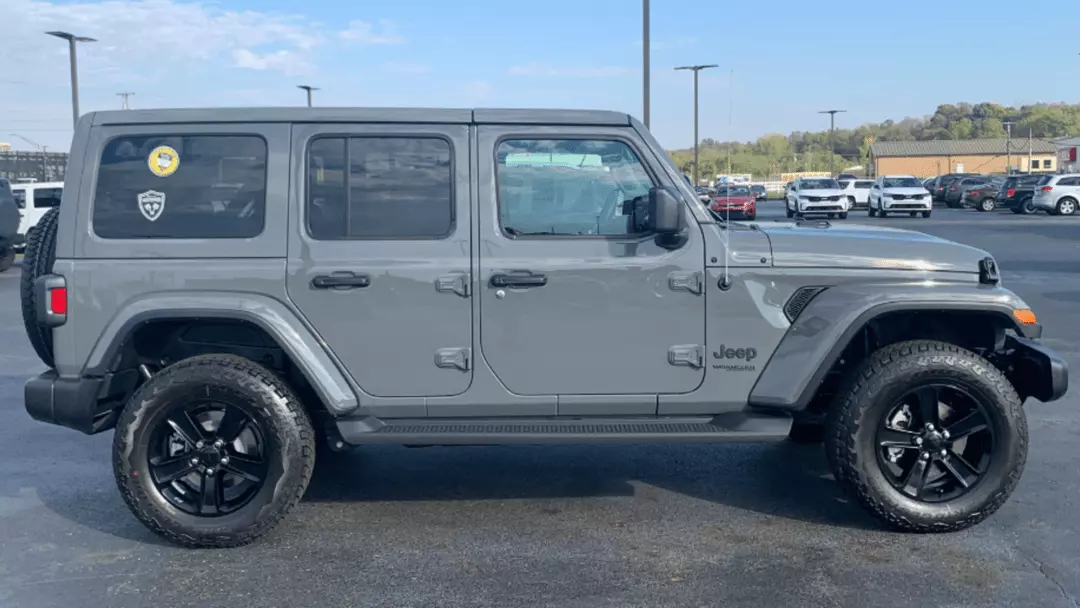
-
Condition of the Existing Paint and Body:
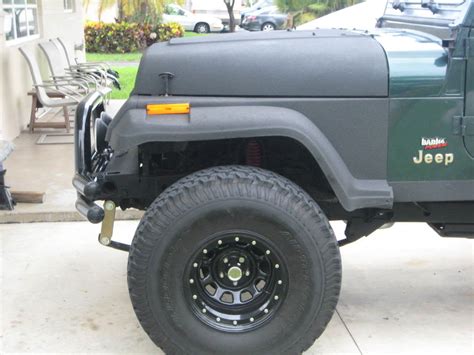
- Minor Scratches/Swirls: Less prep work, lower cost.
- Deep Scratches/Dents: Requires body filler, sanding, and potentially panel replacement, significantly increasing labor and material costs.
- Rust: The presence of rust, especially significant surface or structural rust, necessitates removal, treatment, and potentially welding new metal, which is a major cost driver.
- Peeling Clear Coat/Faded Paint: Indicates the need for thorough sanding to create a proper adhesion surface.
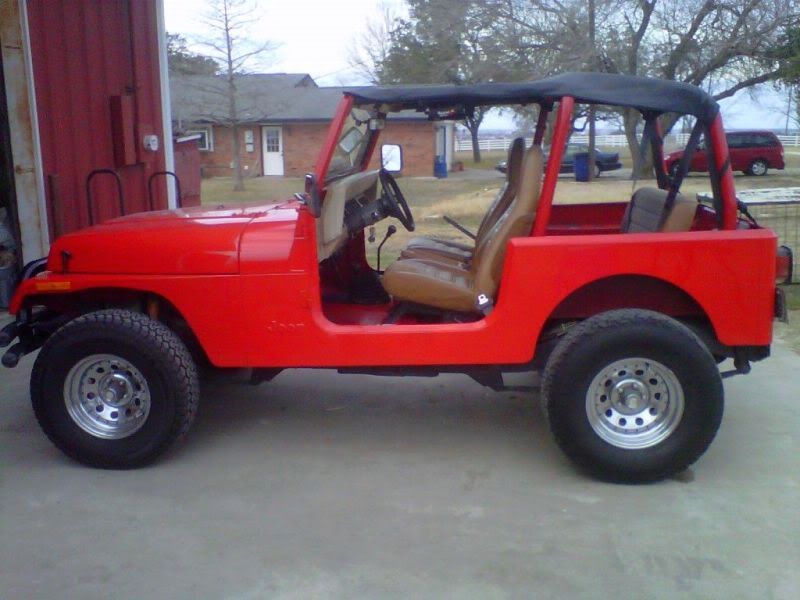
-
Labor Costs and Geographic Location:
- Labor rates for auto body shops vary significantly by region, state, and even within cities. Major metropolitan areas tend to have higher labor costs than rural areas.
- The reputation and expertise of the shop also play a role; highly skilled and reputable shops may charge more for their guaranteed quality work.
-
Quality and Type of Paint Materials:
- Urethane vs. Enamel vs. Acrylic: Urethane paints are generally more durable, fade-resistant, and flexible, making them more expensive but offering superior longevity. Enamels and acrylics are cheaper but may not last as long or offer the same finish quality.
- Brand of Paint: Premium paint brands (e.g., PPG, BASF, Sherwin-Williams) cost more than generic alternatives but often provide better color consistency, durability, and a wider range of colors.
- Color Choice: Standard, common colors might be less expensive than custom-mixed, pearl, metallic, or multi-stage colors due to the complexity of the pigments and application.
-
Extent of Prep Work Required:
- This is arguably the most critical factor. A high-quality paint job is 80% preparation. This includes:
- Thorough cleaning and degreasing.
- Sanding down old paint layers.
- Repairing dents, dings, and rust spots.
- Applying primer and block sanding for a perfectly smooth surface.
- Masking off windows, trim, and other components.
- Disassembly (e.g., removing doors, fenders, grille) for a more comprehensive, jamb-painted finish.
- This is arguably the most critical factor. A high-quality paint job is 80% preparation. This includes:
-
Color Change vs. Same Color:
- Painting the same color is generally cheaper because the shop doesn’t need to paint the door jambs, engine bay, or trunk/tailgate area unless specifically requested.
- A full color change requires painting all visible and often hidden areas, which is significantly more labor-intensive and costly.
-
Additional Services:
- Ceramic Coating/Paint Protection Film (PPF): Applied after painting for enhanced protection and shine, adding to the overall cost.
- Decal/Sticker Removal and Reapplication: If your Wrangler has existing decals, removing them and replacing them with new ones adds to the cost.
- Minor Bodywork (beyond paint prep): Extensive dent removal, panel replacement, or structural repairs will be quoted separately.
Types of Paint Jobs and Their Estimated Costs for a Jeep Wrangler
Here’s a breakdown of what you can expect for different tiers of paint jobs:
-
Basic/Budget Paint Job (Exterior Only):
- What it entails: Minimal surface prep, usually a single-stage paint (color and clear coat combined) or a very thin base coat/clear coat application. May not address minor dents or rust spots thoroughly. Often involves masking rather than removing components.
- Pros: Most affordable option, quick turnaround.
- Cons: Less durable, prone to fading faster, may show imperfections, limited color choices.
- Estimated Cost: $1,500 – $3,000
-
Standard/Mid-Range Paint Job (Exterior with Door Jambs):
- What it entails: More thorough surface preparation, including sanding, minor dent repair, and primer application. Uses a quality base coat/clear coat system with at least two clear coats. Door jambs and often under-hood edges are painted.
- Pros: Good balance of quality and cost, much better durability and shine than a basic job.
- Cons: Still not a "show car" finish, significant body damage might not be fully addressed without extra cost.
- Estimated Cost: $3,000 – $6,000
-
Premium/Show-Quality Paint Job (Full Respray):
- What it entails: Meticulous disassembly of the vehicle (doors, fenders, hood, tailgate, trim), extensive bodywork (dent removal, rust repair, panel alignment), multiple layers of high-quality primer, base coat, and clear coat. Wet sanding between coats, and final compounding/polishing for a deep, flawless finish. Includes painting all visible surfaces, inside door jambs, under the hood, and potentially the interior tub if desired.
- Pros: Exceptional durability, stunning deep shine, flawless finish, custom color options. Increases vehicle value significantly.
- Cons: Most expensive option, takes a considerable amount of time.
- Estimated Cost: $6,000 – $15,000+ (can go much higher for custom colors, pearl effects, or multi-stage candy paints)
-
Specialty Finishes (e.g., Raptor Liner):
- What it entails: Application of a durable, textured protective coating. Often chosen for off-road Jeeps for its scratch resistance and unique look. Can be applied to the exterior, interior, or both.
- Pros: Extremely durable, excellent scratch and UV resistance, unique aesthetic.
- Cons: Limited color options (though custom tinting is possible), rough texture may not appeal to everyone, difficult to repair seamlessly if damaged.
- Estimated Cost: $3,000 – $7,000+ (depending on coverage area and prep work)
The Paint Job Process: What You’re Paying For
A professional paint job involves a multi-step process, and each stage requires skill and time:
- Inspection and Assessment: The shop evaluates the current condition, identifies damage, and discusses options with the client.
- Disassembly: Necessary components like lights, bumpers, trim, door handles, mirrors, and sometimes even doors and fenders are removed to ensure complete coverage and prevent overspray.
- Surface Preparation: This is the most crucial step. It includes:
- Cleaning: Thorough washing and degreasing.
- Sanding: Removing old paint layers, feathering edges, and creating a surface for adhesion.
- Bodywork: Repairing dents, dings, and rust. Applying body filler and sanding it smooth.
- Priming: Applying an epoxy or high-build primer to seal the surface and provide a uniform base for the paint. This is often followed by "block sanding" to ensure a perfectly flat surface.
- Masking: Meticulously covering all areas not to be painted (windows, wheels, interior).
- Painting: Applying multiple thin coats of base coat (color) in a climate-controlled spray booth. Followed by several layers of clear coat for protection and shine.
- Drying/Curing: Allowing sufficient time for the paint to cure, often accelerated with heat lamps.
- Sanding and Polishing: For higher-quality jobs, the clear coat is wet-sanded to remove any imperfections (dust nibs, orange peel) and then polished/compounded to a high gloss.
- Reassembly and Final Inspection: Reattaching all removed components, performing a thorough quality check, and detailing the vehicle.
DIY vs. Professional Paint Job
While the allure of saving money on a DIY paint job for your Wrangler might be strong, it’s essential to weigh the pros and cons:
- DIY Paint Job:
- Pros: Significant cost savings on labor, personal satisfaction.
- Cons: Requires specialized equipment (compressor, spray gun, respirator), a clean and well-ventilated space (garage booth), considerable skill and knowledge, high risk of poor quality (runs, drips, uneven finish, poor adhesion), takes a lot of time, no warranty, potentially dangerous fumes. Results rarely match professional quality.
- Professional Paint Job:
- Pros: Superior quality and durability, access to professional-grade paints and equipment, expertise in bodywork and prep, warranty on work, proper safety measures, saves you time and effort.
- Cons: Significantly higher cost.
For a vehicle like a Jeep Wrangler, which is often subjected to harsh conditions, a professional paint job is almost always the recommended route for longevity and protection.
Tips for Saving Money (Without Sacrificing Quality Too Much)
- Get Multiple Quotes: Don’t settle for the first estimate. Contact at least 3-5 reputable auto body shops and compare their services and pricing.
- Be Clear About Your Expectations: Communicate exactly what you want and your budget. A good shop will help you find the best solution.
- Consider Keeping the Original Color: Changing colors adds significant cost due to the need to paint door jambs, under the hood, etc.
- Do Minor Prep Yourself (If Capable): If you’re comfortable, remove accessories like light guards, fender flares, or even soft tops yourself to reduce the shop’s labor time for disassembly. Only do this if you know how to properly reassemble them.
- Address Minor Rust/Dents Early: Small issues are cheaper to fix than extensive damage.
- Ask About Warranties: A reputable shop will offer a warranty on their work, protecting your investment.
Important Considerations Before You Paint
- Resale Value: A high-quality paint job can significantly enhance your Wrangler’s resale value, especially if the original paint was in poor condition. A cheap, shoddy job can actually hurt it.
- Downtime: A professional paint job can take anywhere from one week to several weeks, depending on the scope of work and the shop’s schedule. Plan for alternative transportation.
- Choosing the Right Shop: Look for shops with good reviews, certifications (e.g., I-CAR, ASE), and a portfolio of past work. Ask to see examples of their paint jobs.
- Paint Matching (if partial): If you’re only painting a section, ensure the shop has excellent color-matching capabilities.
Table: Estimated Paint Job Costs for a Jeep Wrangler
| Paint Job Type | Description | Estimated Cost Range | Key Features | Ideal For |
|---|---|---|---|---|
| Basic/Budget | Exterior only, minimal prep, single-stage paint (enamel/acrylic). | $1,500 – $3,000 | Quick, covers faded paint/minor blemishes, limited durability. | Selling vehicle soon, covering up extensive fading, or budget-conscious owners not seeking perfection. |
| Standard/Mid-Range | Exterior + door jambs, decent prep, base coat/clear coat (2-3 layers). | $3,000 – $6,000 | Good durability & shine, addresses minor body flaws, better longevity. | Most daily drivers, owners wanting a significant aesthetic improvement without breaking the bank. |
| Premium/Show-Quality | Full disassembly, extensive bodywork, multi-stage paint, multiple clear coats, wet sanding & buffing. | $6,000 – $15,000+ | Flawless, deep, long-lasting finish; custom colors possible; increases vehicle value. | Enthusiasts, show vehicles, complete restorations, or owners demanding the best possible finish. |
| Specialty (Raptor Liner) | Textured, durable protective coating; exterior or full body. | $3,000 – $7,000+ | Extreme scratch/UV resistance, unique rugged look, easy to clean. | Off-road enthusiasts, owners seeking ultimate durability and a distinctive, utilitarian aesthetic. |
Note: These are general estimates. Actual costs will vary based on geographic location, specific shop, condition of the vehicle, and chosen materials.
Frequently Asked Questions (FAQ)
Q1: How long does a paint job on a Jeep Wrangler take?
A1: A basic paint job might take 3-5 days. A standard job usually takes 1-2 weeks. A premium, show-quality paint job with extensive prep and disassembly can take 3-6 weeks or even longer.
Q2: Does a new paint job increase resale value?
A2: A high-quality professional paint job can absolutely increase resale value, especially if the original paint was severely damaged. It makes the vehicle more appealing to potential buyers. A cheap, low-quality paint job, however, can detract from the value.
Q3: What kind of paint is best for a Jeep Wrangler?
A3: For durability and longevity, a two-stage urethane base coat/clear coat system is generally recommended. For extreme off-road use, a textured coating like Raptor Liner offers superior protection against scratches and chips.
Q4: Can I just paint over rust?
A4: No, painting over rust is a temporary fix and will lead to the rust returning quickly. Rust must be completely removed, treated, and the metal prepared properly before painting to ensure a lasting finish.
Q5: How often should a Jeep Wrangler be repainted?
A5: A well-maintained factory paint job can last 10-15 years or more. The need for repainting depends on exposure to elements, off-road use, and personal preference. If the clear coat is failing, rust is appearing, or you simply want a new look, it’s time to consider it.
Q6: Is Raptor Liner cheaper than a traditional paint job?
A6: For a full exterior application, Raptor Liner can sometimes be comparable to or even slightly more expensive than a standard paint job due to the extensive prep work and material cost. However, it offers superior durability against scratches and chips, making it a popular choice for off-road enthusiasts.
Conclusion
Repainting your Jeep Wrangler is a significant investment that can revitalize its appearance, protect its body, and even enhance its value. The cost is highly variable, influenced by factors such as the desired quality, the extent of necessary bodywork, and the type of paint chosen. While a DIY approach might seem tempting for cost savings, a professional paint job ensures durability, a flawless finish, and a warranty, making it the recommended choice for most Wrangler owners. By understanding the process, evaluating your needs, and seeking multiple quotes from reputable shops, you can make an informed decision and give your adventurous Jeep the stunning new look it deserves.
